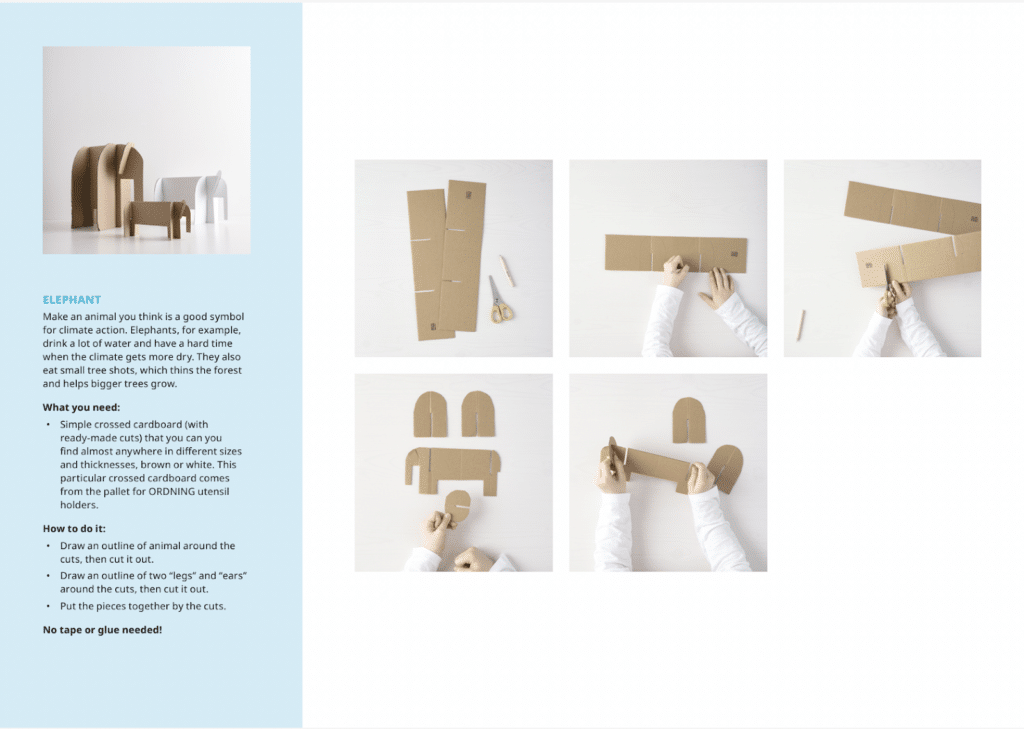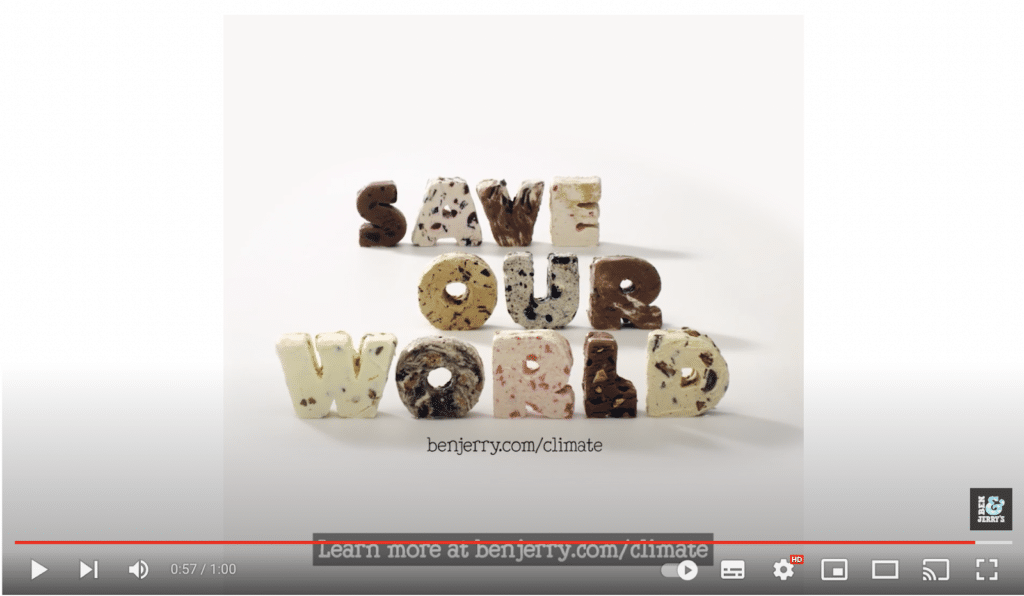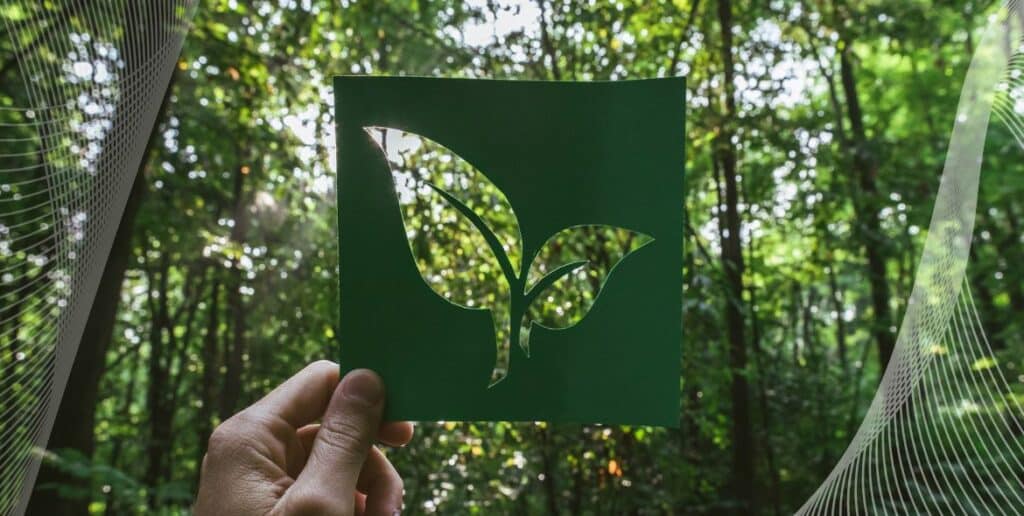You might have a green thumb when it comes to your garden, but do you have a green mindset when planning your marketing campaigns?
It’s 2023, and the race to net zero is afoot for most major businesses and organisations. The planet’s asking for help, and in response, consumers are selecting brands that are making a difference with their sustainable practices and reducing greenhouse gas emissions. It’s become central to customer loyalty.
In turn, businesses are looking to engage partners, suppliers, and service providers that can support their environmentally friendly practices across the supply chain and keep their footprint down. Which makes green marketing a critical element to your business growth.
Your green efforts are commendable and deserve to be talked about. But how?
What is a green marketing campaign?
Maybe you’re introducing new, planet-friendly products and services. Or you want to communicate your latest strategy and sustainable practices to save energy and achieve lower carbon emissions.
To do this best, you need the right green marketing strategy that is both strategic and thoughtful. This means that you can implement green marketing campaigns that help you reach your target audience with your messages effectively.
Successful green marketing examples include those that engage multiple channels, use the most creative methods, and deviate from the usual constraints of branding.
Investing in green marketing has many benefits
- Sharing your sustainability efforts will help you stand out as an eco-friendly option in a crowded and increasingly competitive market.
- You can increase credibility and trust with your customers and stakeholders.
- It means you can secure your long-term growth prospects without being left behind.
- You can share your environmentally friendly practices to set a good example for other brands in your sector.
- Most importantly, you’re demonstrating your environmental stewardship – in other words, your responsibility to protect the planet and help meet emissions reduction targets.
Making the most of marketing tactics
The latest marketing techniques can help you tell the story behind your brand’s sustainable practices. Or you can start some fun interactive campaigns to get your consumers’ attention and help encourage greener choices.
Green marketing efforts mean your brand image can start to become associated with sustainability, making you familiar in the minds of responsibly-minded consumers. But there’s a catch.
What is greenwashing?
Greenwashing: A company’s claim to environmentally friendly practices or products that actually have no positive impact on the planet or are cancelled out by their other emission-heavy activities.
The line between greenwashing and successful green marketing campaigns is hard to walk.
For example – companies used to get away with planting trees to offset their emissions. But now, promoting your excessive offsetting without any attempt to reduce your overall carbon footprint (e.g. by investing in renewable energy) can be seen as an act of greenwashing.
How do I avoid greenwashing?
The truth is that if your green marketing goal is to brag or conform to environmental trends, an element of greenwashing is hard to avoid.
But by considering the latest climate targets and taking as much action as possible, there is a way your marketing efforts can humbly and honestly tell your green story without alienating your audience.
Here’s some inspiring examples of green marketing campaigns that we love:
What are some examples of great green marketing campaigns?
1. IKEA – “Get creative with cardboard” campaign
If you’re familiar with IKEA, you’re probably also pretty familiar with cardboard.
And if you have kids (or indeed cats), you’ll know that cardboard alone can be an endlessly entertaining hideout to play in.
But this Swedish furniture brand has taken this one step further by bringing out a set of step-by-step instructions (another iconic hallmark of the brand) for creating crazy things out of leftover cardboard boxes.

It’s not just teaching our kids to be creative with limited resources – it’s also engaging a planet-friendly mindset from an early age by encouraging the repurposing of waste.
It’s an excellent example of a clever green marketing campaign that engages with multiple audiences in a way that matches their branding.
This ties in with their overall mission to become a circular business by 2030, aiming to reduce carbon emissions across their manufacturing process. From offering new parts to extend the lifecycle of consumer products to investing in sustainable sourcing and designing products that can be reused, refurbished, remanufactured, or eventually recycled, IKEA is already well on its way to its goal. They’ve also invested billions in renewable energy, using their position to spread sustainable benefits even further.
2. Patagonia – “Protect the ocean so it can protect us”
Ah, Patagonia. Our favourite sustainable outdoor clothing brand since the introduction of its Common Threads Recycling Program in 2007.
They’re already known for being crazy about the planet, operating with 76% renewable energy globally, and matching this ethos across their sourcing and supply chain with their continued use of sustainable cotton and other environmentally friendly materials, as well as lifetime guarantees on all their items to increase longevity and reduce waste. Not to mention their “Outstanding” B-Corp rating.
But when it comes to their green marketing, the most important thing Patagonia does is admit to its shortcomings. While they mainly use sustainable materials, fossil fuels are clearly labelled rather than hidden under layers of green cardboard. And instead of impacting their reputation, telling the truth conveys their modesty and dedication to doing better.

And they’re creating plenty of content on their website to support climate change prevention activity and propel the green movement. For example, check out their current charity campaign on protecting the ocean. It’s an interactive green marketing content hub filled with educational videos and petitions to sign.
3. Hellman’s – Fighting food waste
If you don’t like mayonnaise, skip this one (but seriously, what’s wrong with you?).
Hellman’s’ recent campaigns to fight food waste are not only a great example of green marketing but a masterclass in multichannel influencer marketing.
The concept is simple: find random items in the fridge, build them into a meal – and don’t forget to add a nice big dollop of Hellman’s mayonnaise, of course.
To encourage customers to shop less, save food from going to waste, and get a delicious meal out of it, Hellmans has partnered with multiple influencer names across a variety of channels over recent years, including
- A virtual Animal Crossing New Horizons island where players could exchange spoiled produce for currency donated to Canada’s largest food waste charity.
- An exclusive show on Channel 4 hosted by Prue and Rupy, titled “Cook Clever Waste Less”.
- Partnership recipe features on Mob Kitchen, a popular social media food giant.
A Super Bowl ad starring Jon Hamm and Brie Larson (Hamm and Brie in the fridge, get it?)
4. Ben & Jerry’s – If it’s melted, it’s ruined
Is it fair to say that Ben & Jerry’s is the Patagonia of the dessert world?
Ben & Jerry’s is notorious for their social justice actions, sustainable product packaging, and seriously delicious ice cream.
Besides being delicious, their prolonged popularity despite the premium price point is definitely down to the honesty, dedication, and intensity of the work they do, using their platform to build a better world.
My favourite Ben & Jerry’s green marketing example, however, is their 2020 campaign for Earth Day. It gives us a genius allegory of ice cream and the planet, making us hungry for dessert AND dramatic change.

They offer some amazing educational resources on their website which positions themselves as an environmentally friendly thought leader in the field. And this is backed up by the extensive campaign, volunteering, and donation support that they provide for the community and the planet.
Plus, they’ve committed to some ambitious Science-Based Targets, including a dedication to operate on 100% renewable energy by 2025. And they’re plenty ethical, sourcing several of their core ingredients on Fairtrade terms, and offering Vegan Society certified tubs too.
Quick fire!
We asked some leaders to share their own favourite green marketing campaigns. Here’s what they had to say…
“What I found particularly impactful about this campaign was how it blended fashion and conservation. By associating their brand with endangered species, Lacoste effectively communicated the urgency of protecting these animals and their habitats. It sparked conversations and captured the attention of both fashion enthusiasts and conservation advocates.” – Jonathan Merry, Founder, Moneyzine
“The initiative aims to minimize waste and achieve a 30% reduction in water usage and a 25% decrease in energy consumption during production. Additionally, Starbucks prioritizes environmentally conscious practices such as designing recyclable coffee cups, engaging in recycling and green building efforts, supporting farmers and promoting sustainable agriculture, and effectively communicating its message to its target audience.” – Somiya Kumar, Senior Content Executive, GMR web team
“Greenpeace has created an incredibly powerful and impactful green marketing campaign with their “There’s a Rang-Tan in My Bedroom” video, designed to raise awareness of the destruction caused by palm oil production. It successfully gets people thinking about the impact of their lifestyle choices on the environment and encourages them to think more sustainably in their lives.” – Martin Seeley, CEO, Mattress Next Day
Some top tips to take with you for your green marketing campaigns
From the green marketing examples we’ve seen so far, there are a few factors that make these campaigns a success.
- Be honest!
Shying away from your shortcomings comes across as disingenuous. But coming up with creative ways to make your mistake into an educational point means you can build stronger relationships with your customers.
- Still, don’t be afraid to tell people about what you’re up to.
It’s important for your customers and competition to see that you’re taking action, so more follow in your footsteps. Use the best marketing strategies to tell your environmentally friendly story, from employee initiatives to meeting milestones.
- Promote your content on multiple channels to engage everyone.
Your environmentally friendly actions deserve to be seen, and it’s important that audiences of all ages and levels are able to engage with your green marketing content everywhere to be educated and understand what you’re up to.
- Conduct research to understand what your customers and stakeholders want to see from you.
This means your environmental sustainability efforts are aligned with their needs. It can also expose where you’re lacking, or what areas you might not even have considered, so you can expand sustainable practices.
- Make it fun!
The common thread running through all the green marketing examples above is to enjoy the sustainability journey. Climate change is serious, but taking this message too far risks alienating your audience, especially if they already experience climate anxiety.
Getting started
If you’re starting new sustainable practices and want to communicate this, or you’re looking to promote some eco-friendly practices, we hope this has helped inspire you. And we wish you the best of luck with your green marketing strategy!
If you’d like to discuss how Isoline can help you with your green marketing campaigns and share your sustainable business practices, get in touch at hello@isolinecomms.com.
And now I’m going to grab a mayo-filled sandwich and a tub of Ben & Jerry’s!
Like what you just read?
There’s more where that came from. Sign up to our newsletter to get the latest B2B tech news, content marketing insights, tips, tricks, memes, and more, delivered straight into your inbox every month.



